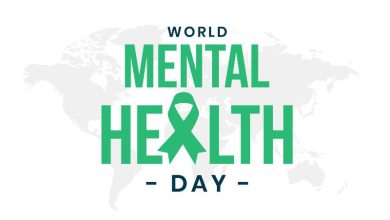Mental Health in the Digital Age
The rise in anxiety, depression, and screen-time-related issues among teens and adults

Digital tools have become part of everyday life—shaping how we work, socialise, learn, and unwind. But with that constant connection comes a rising concern: how does heavy screen use affect mental health? Many teens and adults are now reporting higher levels of anxiety, depression, and stress, with growing research linking these conditions to excessive time spent online.
If you’re a parent, caregiver, teacher, or someone navigating your own emotional wellbeing, you might be asking: Is too much screen time harming mental health? The causes, signs, and ways to protect yourself and others in this digital environment.
How Screen Time Affects Mental Health
The average person now spends more than seven hours a day in front of a screen. For many, this means a blend of work emails, social media, video streaming, and online messaging. While technology can be helpful, too much exposure—especially without balance—can lead to emotional exhaustion and disconnection.
Key Effects of Excessive Screen Time:
- Sleep Disruption
Blue light from phones and tablets can interfere with melatonin production, making it harder to fall asleep and stay asleep. Poor sleep quality is closely linked to mood swings, low energy, and difficulty managing emotions. - Increased Anxiety and Depression
Studies show that spending too much time online—particularly on social media—can increase feelings of isolation, low self-worth, and anxiety. Comparing your life to others’ highlight reels can leave you feeling inadequate or disconnected. - Reduced Attention and Memory
Switching between apps and constant notifications can train the brain to lose focus quickly. Over time, this weakens concentration and short-term memory, which may affect performance at school or work. - Social Withdrawal
Digital interactions can’t fully replace real-life human connection. Relying solely on texting, gaming, or social media for communication may limit emotional support and lead to loneliness.
Why Teens Are Especially at Risk
Adolescents are still developing emotionally and neurologically. Their brains are more sensitive to feedback, likes, and online validation. Algorithms that promote addictive scrolling can trap teens in endless content loops, reinforcing compulsive behaviour.
Common signs of digital-related mental distress in teens:
- Sudden changes in mood after using devices
- Avoiding in-person interactions
- Drop in academic performance
- Difficulty sleeping or constant tiredness
- Obsessive checking of notifications
Parents often struggle to distinguish between ‘normal’ screen use and behaviour that might be harmful. Open conversations and setting clear, reasonable limits can make a big difference.
Adults Aren’t Immune
Work-related stress combined with digital overload also affects adults. Remote work has blurred boundaries between job time and personal time, increasing the likelihood of burnout. Adults may experience:
- Emotional numbness or irritability
- Constant mental fatigue
- Trouble switching off after work hours
- Overreliance on digital distractions like scrolling or gaming to cope with stress
The pressure to respond instantly to emails, messages, and work requests can also lead to chronic stress, especially if there are no regular breaks or downtime.
The Role of Social Media
Social platforms encourage constant comparison. Whether it’s body image, lifestyle, or professional success, seeing others’ curated content can make users feel like they’re falling short. This is especially harmful for those already vulnerable to self-esteem issues.
Cyberbullying, online harassment, and the fear of missing out (FOMO) further intensify mental distress. Some platforms are taking steps to reduce harm—like hiding like counts or limiting comment sections—but individual responsibility and awareness are still key.
Protecting Mental Wellbeing in a Digital Environment
If you’re concerned about your mental health or that of someone you care about, there are practical ways to manage digital habits and reduce the negative impact of screen time.
Helpful Tips:
- Set Screen Limits
Use device settings to restrict non-essential app time. Encourage tech-free meals and regular breaks during the day. - Prioritise Face-to-Face Interaction
Make time for in-person conversations and activities that don’t involve screens, such as walking, reading, or hobbies. - Establish a Digital Curfew
Turn off screens at least an hour before bed to help restore healthy sleep patterns. - Be Mindful of What You Consume
Unfollow accounts that promote unrealistic standards or trigger anxiety. Choose content that uplifts and informs instead. - Use Technology for Support
Apps for mental health, meditation, and time tracking can help you stay aware of usage patterns and emotional triggers.
When to Seek Professional Help
If you or someone close to you is experiencing ongoing sadness, anxiety, or thoughts of self-harm, don’t wait to get support. Speak to a GP, therapist, or mental health advisor. Early help can prevent more serious issues from developing.
It’s also worth noting that not all screen time is negative. In fact, many people have found online communities, support groups, and mental health tools that improve their lives. The key is to create a healthy balance between the digital and offline world.
To learn more about this growing issue and its impact on individuals across age groups, you can explore more in our related article on Mental Health in the Digital Age.
Final Thoughts
Living in a connected world brings both benefits and challenges. Recognising how digital habits affect your mental health is the first step toward change. Whether you’re setting healthier boundaries for yourself or helping someone else, small shifts can lead to better emotional wellbeing.




